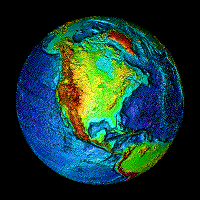Mayon Volcano Update [30 December 2009]
Posted by feww on December 30, 2009
Mayon Calmer, But it Could Be the Lull Before the Storm
It would be very helpful if PHIVOLCS released more detailed information on Mayon status!
Highlights of news, observations, official and unofficial reports:
- Minor ash explosions down to one
- Tephra ejected to a height of 100 meters above the summit
- Continuous lava flow down Bonga-Buyuan, Miisi and Lidong gullies
- Lava front traveled an additional 100 meters to a distance of 5.9 km from th esummit
- 16 volcanic earthquakes recorded
- 150 rockfall events caused by lava fragments detaching from the upper slopes
- SO2 emission rate of 4,397 tons per day almost a third higher than the previous day
- The edifice remains inflated
The Human Angle
- About 50,000 people are still crammed in 29 evacuation centers in the country’s eastern province of Albay.
- Local schools are doubling as makeshift evacuation centers.
- The evacuees may have to spend several months in the centers.
- But schools are supposed to open after New Year holidays.
- Water and sanitation facilities are in critically short supply, UNICEF said.
- Evacuees have been advised to protect their children from Mayon’s fine ash, because it could worsen asthma, bronchitis and respiratory-related illnesses; however, face masks are reportedly in short supply.
- At least four people have died in the evacuation centers so far. A 3-year-old from an unspecified infection and three elderly people from heart attacks, health officials have revealed.
- Crowding and cramp conditions have already led to widespread skin diseases and respiratory illnesses throughout the 29 shelters.
- Food isn’t in short supply, but there’s a shortage of items such as nappies for babies and sanitary towels for women, according to a local news bulletin.
- “The evacuees face the grim prospect of being away from home for several more weeks—local disaster officials said the worst case is six more months since Mayon Volcano remains under Alert Level 4 indicating imminent eruption.” The report said.
- An elected official of Legazpi City, Councilor Celoy Chan, has been “renting his All Terrain Vehicles (ATVs) to foreign tourists [in direct contravention of the emergency laws] and even escorting them for a trip right near the lava front of the Mayon volcano.” A news report said.
- Evacuees in Legazpi City and Tabaco City shelters are being “shortchanged.” That is, they are only receiving half the amount of relief goods, especially rice, allocated to them. Every family is allocated 5 kilograms of rice daily but they only receive 2 ½ to 3kgs, according to another report.
- Province of Albay officials say about 2,500 tourists per day are flocking into the region to see Mayon activity, a rise of about 15 folds since the volcano became restive on December 14.
The following Bulletin was released by The Philippine Institute of Volcanology and Seismology (PHIVOLCS) today:
Mayon Volcano Bulletin 17 released on 30 December 2009
For the past 24 hours, one ash explosion occurred at Mayon Volcano (13.2576 N, 123.6856 E). The explosion produced a dirty white ash column that rose to about 100 meters above the summit and drifted to the northwest. Lava continued to flow down along the Bonga-Buyuan, Miisi and Lidong gullies. The lava front has now reached about 5.9 kilometers from the summit along the Bonga-Buyuan gully.
Mayon Volcano’s seismic network recorded 16 volcanic earthquakes. A total of 150 rock fall events related to the detachment of lava fragments at the volcano’s upper slopes was also detected by the seismic network. Yesterday’s measurement of Sulfur Dioxide (SO2) rate yielded an average value of 4,397 tonnes per day (t/d). The volcano edifice remains inflated as indicated by the electronic tilt meter installed at the northeast sector of the volcano.
The status of Mayon Volcano is maintained at Alert Level 4. PHIVOLCS-DOST reiterates that the Extended Danger Zone (EDZ) from the summit of 8-km on the southern sector of the volcano and 7-km on the northern sector should be free from human activity. Areas just outside of this EDZ should prepare for evacuation in the event hazardous eruptions intensify. Active river channels and those perennially identified as lahar prone in the southern sector should also be avoided especially during bad weather conditions or when there is heavy and prolonged rainfall. In addition, Civil Aviation Authorities must advise pilots to avoid flying close to the volcano’s summit as ejected ash and volcanic fragments from sudden explosions may pose hazards to aircrafts. PHIVOLCS–DOST is closely monitoring Mayon Volcano’s activity and any new significant development will be immediately posted to all concerned.
For previous entries, additional information, photos and links to Mayon Volcano see links below:
Related Links:
- Mayon Volcano Update [29 December 2009]
- Mayon Volcano Update [28 December 2009]
- Mayon Volcano UPDATE: 27 Dec 09
- Mayon Volcano Update [26 December 2009]
- Mayon Volcano Update [25 December 2009]
- Mayon Volcano Update 24 December 2009
- Mayon Volcano Update 23 December
- Mayon Volcano Update [22 December 2009]
- Mayon Alert Raised to Level 4
- 76% chance Mayon explodes before 2010
- Volcano UPDATE: Mt Mayon Could Explode
- Mayon Lava in Interesting Times!
- Mayon Volcano Oozes Lava
- Strong Earthquake Strikes Mindanao, Philippines
- VolcanoWatch Weekly [11 Nov 2009]
- Latest From TAAL and other Philippines Volcanoes
- Mount Mayon neighbors on evacuation alert
- Mayon Volcano Ejects Ash
- VolcanoWatch Weekly [18 Nov 2009]
- Mayon’s crater glow grows more intense
- Strong Earthquake Strikes Mindanao, Philippines
- VolcanoWatch Weekly [11 Nov 2009]
- Earth undergoing significant geophysical disturbances

Mayon Volcano Update [31 December 2009] « Fire Earth said
[…] Mayon Volcano Update [30 December 2009] […]